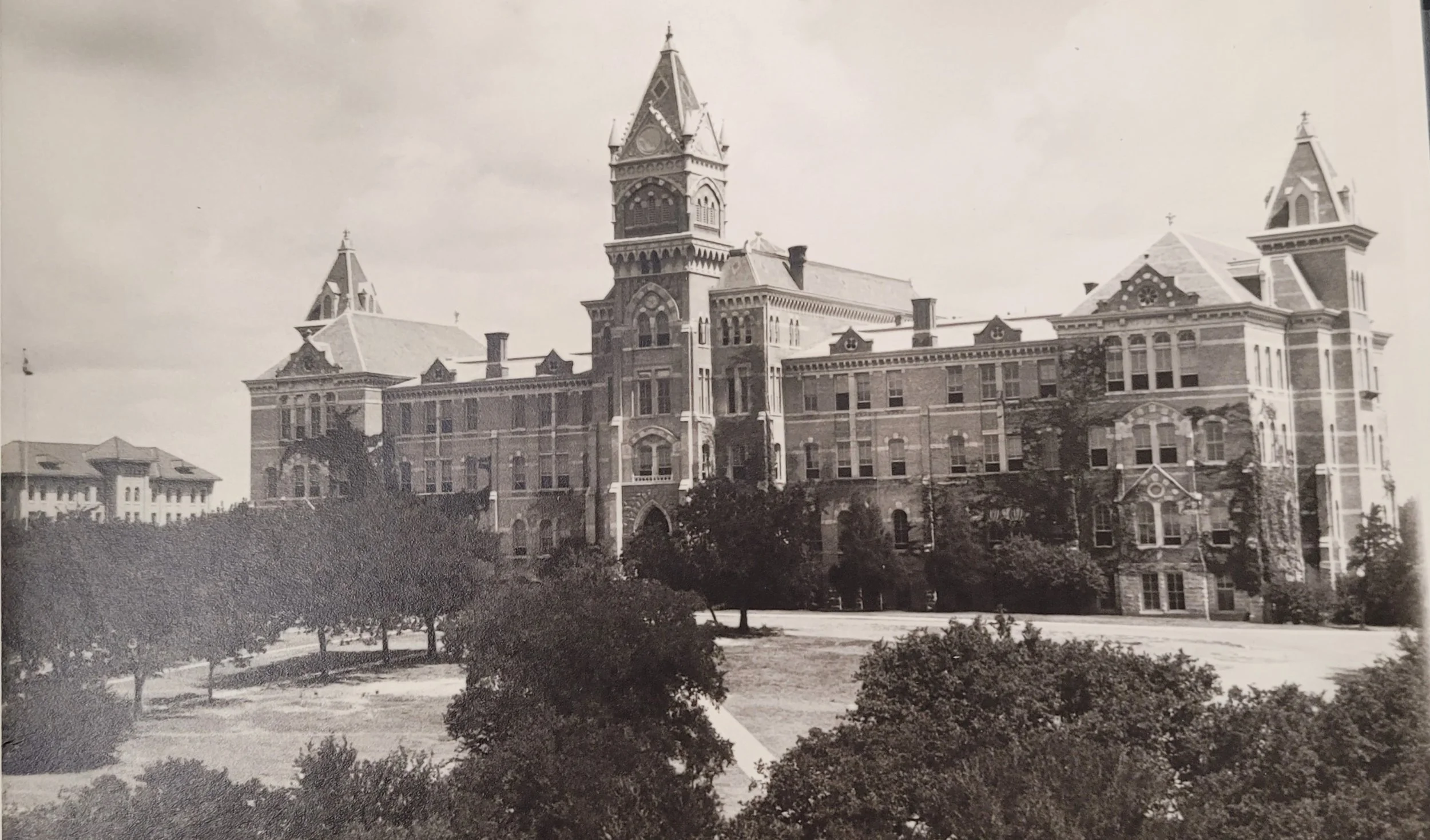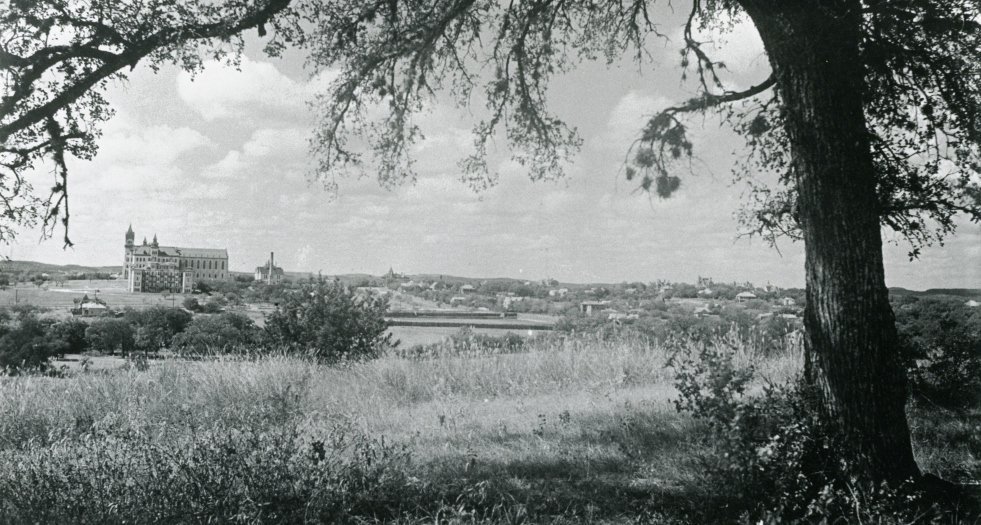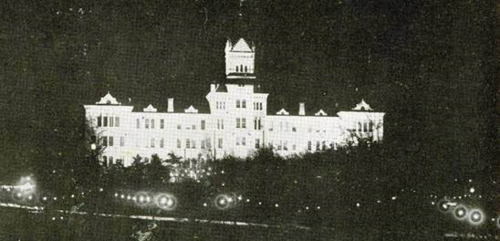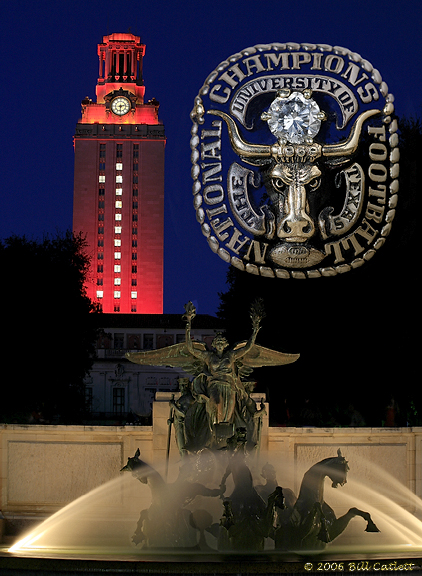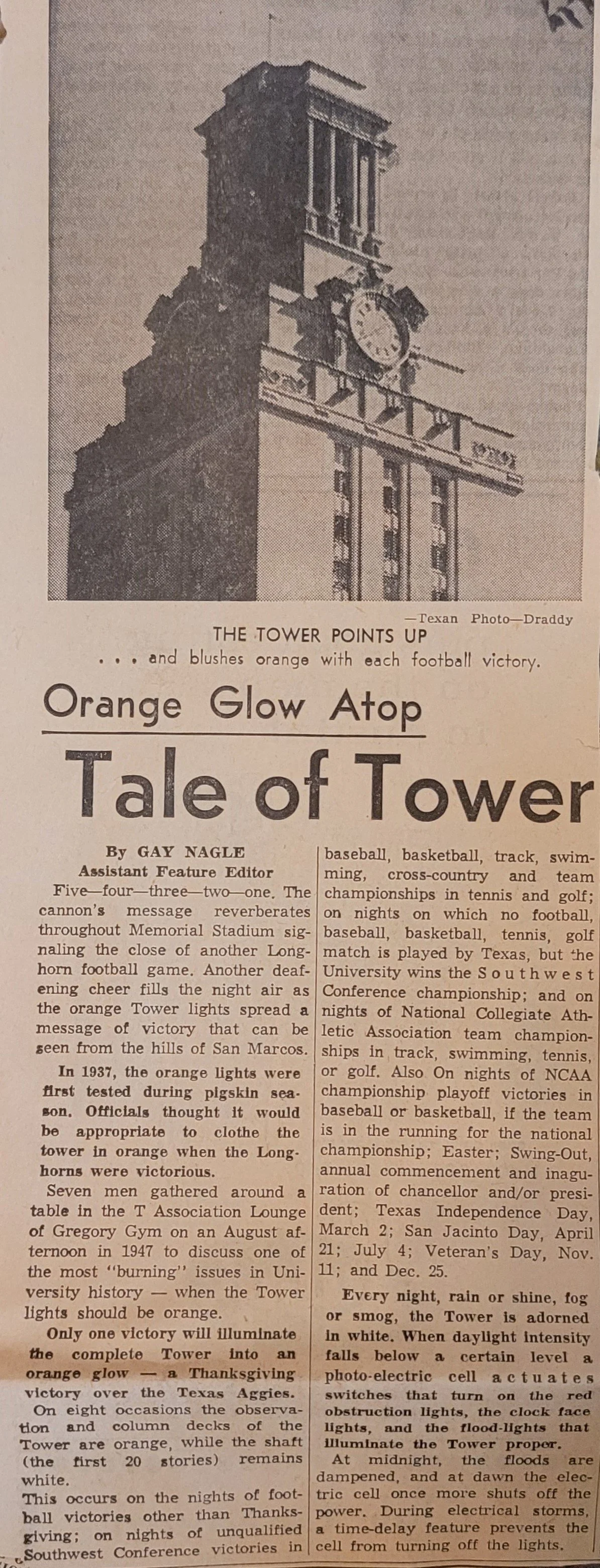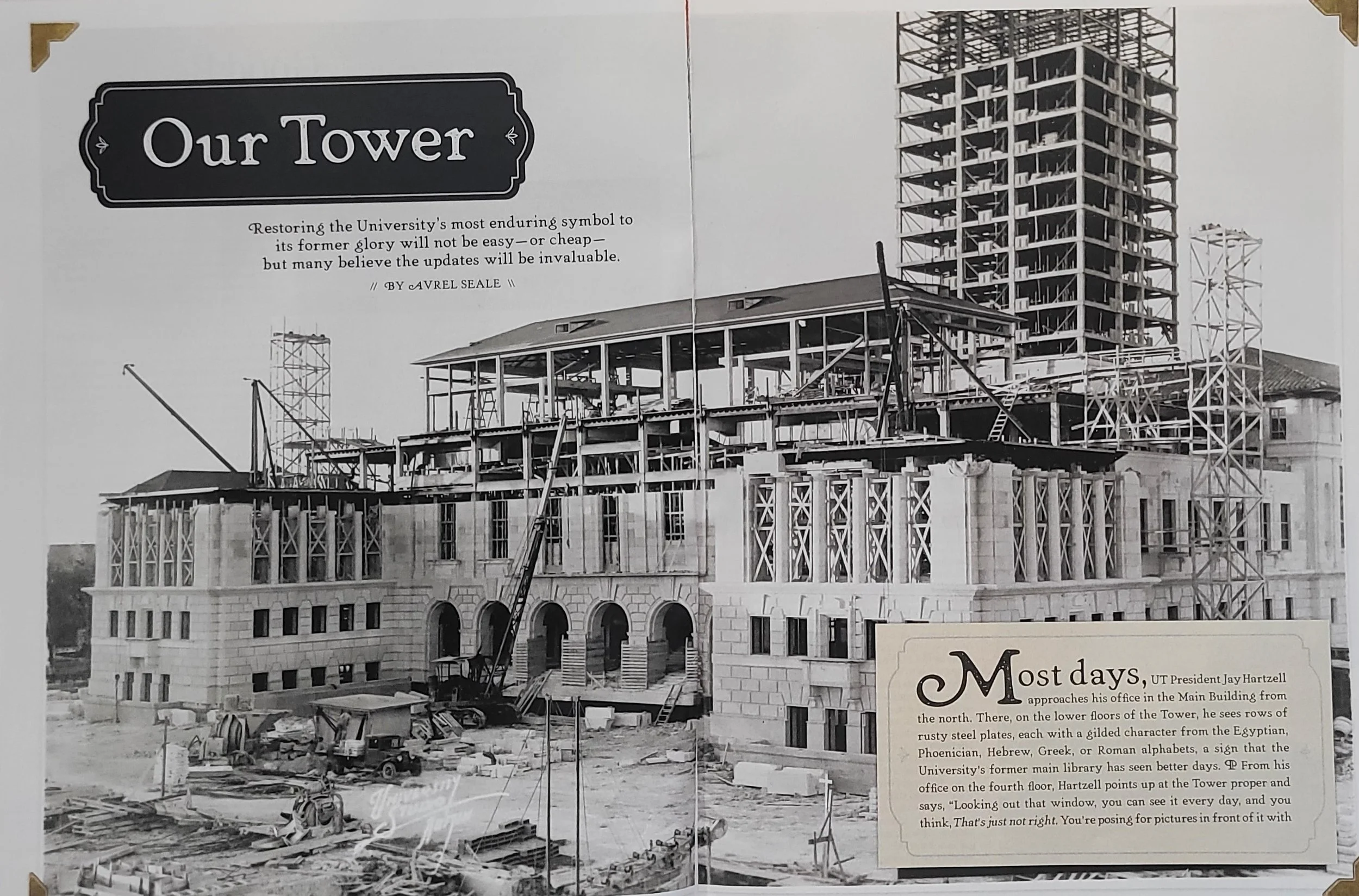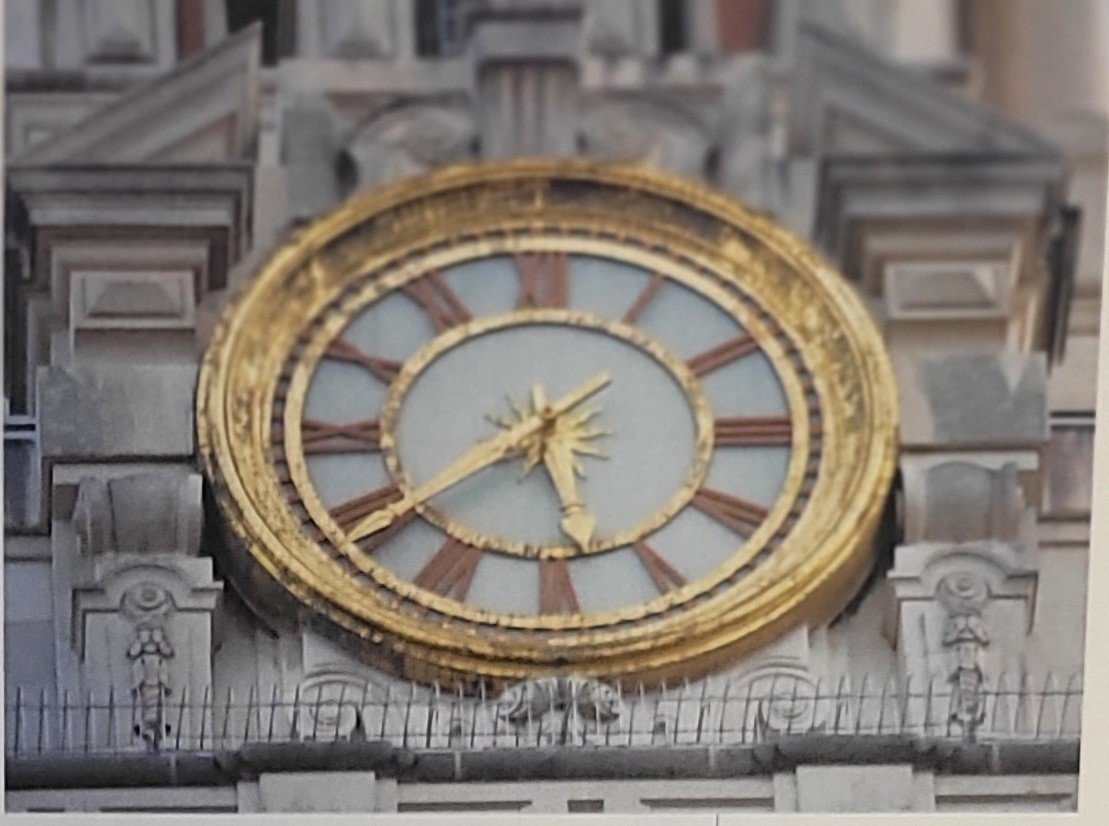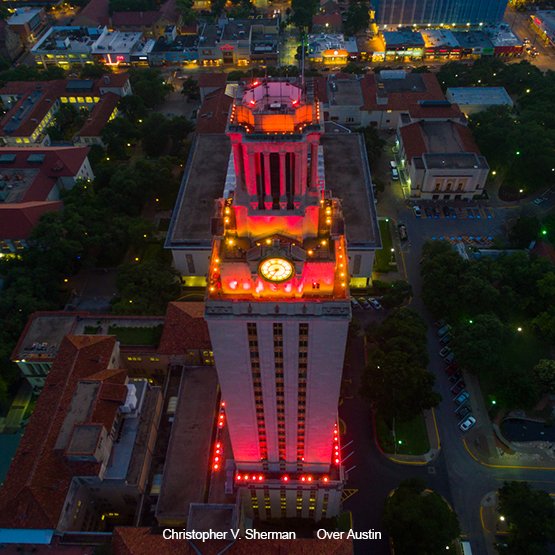Click on the Text denoted in red font on the side bar to visit other sites in this grid
1934, the decision was made to tear down Old Main eventually. The building was unsafe, and part of it had already been condemned. The Tower was the replacement.
PHOTOS BELOW BY BILL CATLETT
The tower’s “victory lights” were lit for the first time after a victory on November 6, 1937, after Texas beat Baylor 9-7. The lighting was well received and a tradition born this year. During WWII, the tower lights had to go dark, but the “dim-out” was rescinded in November 1943.
Know Your UT Tower From the UT History Central by Jim Nicar
Commanding the highest point on the Forty Acres, the University of Texas Tower dominates the campus landscape. The Tower replaces the old main building. Opened in 1937, the Tower has become an icon, bathed in orange lights to celebrate academic honors or athletic victories or framed by fireworks at the climax of spring commencement ceremonies. To alumni, the Tower is also a tether to the University's past. It has been a backdrop for freshman convocations, football rallies, concerts, and demonstrations through the decades. To all, the 307-foot Tower is the definitive landmark of the University.
https://twitter.com/overatx/status/835634178645450753
Designed by Paul Cret, a French-born architect then living in Philadelphia, the Main Building was created to house the University's central library. Along the east and west sides of the building, a pair of spacious reading rooms labeled the "Hall of Texas" and the "Hall of Noble Words" connected to a great central reference room. Made with liberal use of oak and marble, the room was decorated with the six seals of Texas.
Tower Light, Tower Bright | The UT History Corner (jimnicar.com)
The Tower also has a shadow side with the Whitman shootings, and many troubled youths chose this venue for suicide.
The Tower is a symbol of excellence, an iconic and historical building that represents the beginning of a university reaching for national recognition. As UT graduate Marcie Zlotnik says, "I" t includes everyone, whether you’re a native Texan, a visitor, or a transplant. It transcends race, sex, and color”…. “and is a unifying symbol.
1908, UT President Mezes envisioned moving a small college to a great University. The Tower was to be the symbol of a great university. In 1916, Cass Gilbert started the design process to replace Old Main,
but Paul Cret a French architect educated at the prestigious Ecole des Beaux-Arts in Paris, designed The University of Texas at Austin Tower as the centerpiece of the University’s campus. Silhouetted against the Texas sky, it was to be, he said, “the image carried in our memory when we think of the place.”
Rising twenty-seven floors above the reading rooms, the Tower contained the library's book stacks. Made of Indiana limestone, the tower was financed through a grant from the Works Progress Administration, a New Deal program created during the Great Depression. As a closed-stack library, its patrons searched an immense card catalog to identify their selections and then requested books at the front desk.
Orders were forwarded upstairs to a Tower librarian, who often wore roller skates to navigate the rows of bookshelves. Once found, books were sent downstairs in a "dumb waiter" elevator to be checked out.
As enrollment and the library's holdings grew, the waiting time for a book extended to more than half an hour. The need for an open-stack library led to the construction of the Undergraduate Library and Academic Center in 1963 and the Perry-Castaneda Library in 1977. While much of the Main Building was used for administrative offices, students could still study in the grand reading rooms, containing the Life Sciences Library.
The Tower served as a library for only thirty years before students were given open access to books for reading and research in other library formats.
However, the Tower remains significant as a symbol of the University of Texas. It is the epicenter of campus activity and represents the core burnt orange spirit that defines the university's pride. The Tower speaks to the world, conveying the message that what starts here changes the world. President Hartzell has announced a significant remodel to repair the building, which has been neglected for decades.
Under President Hartzell, the Tower will undergo a significant remodel to substantially repair a building that has been lacking maintenance for decades.


